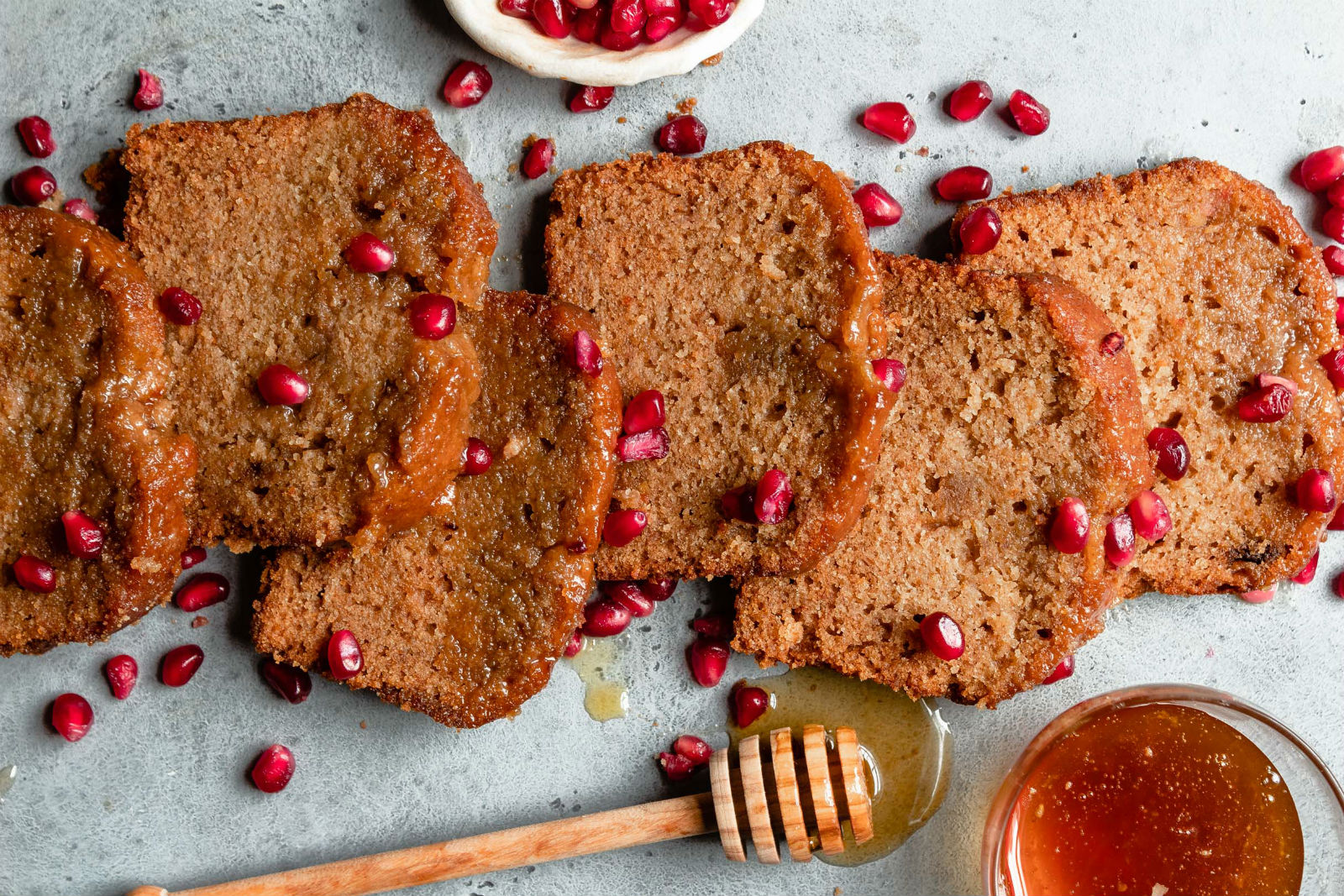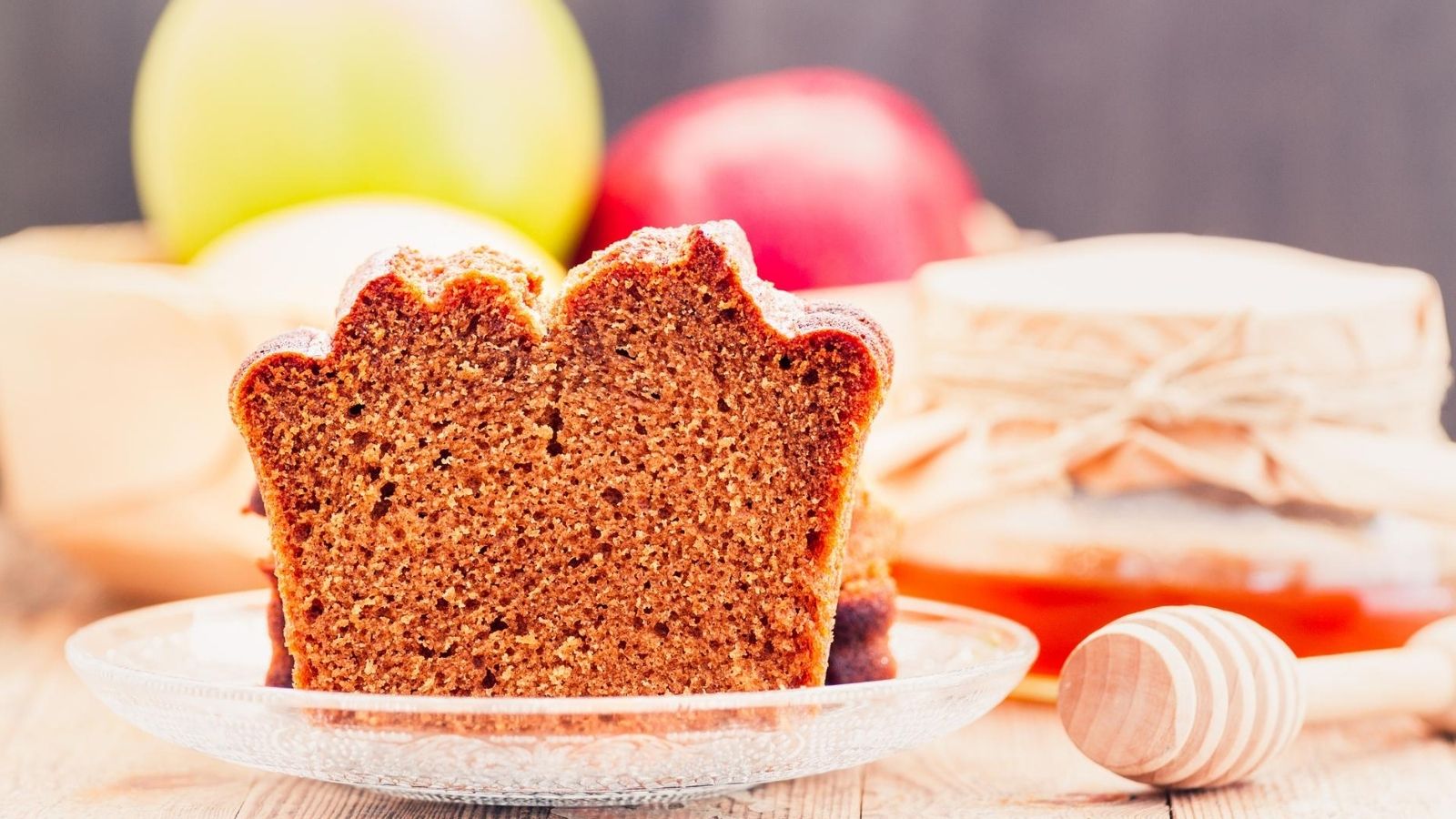Honey cake has had a long and diverse evolution. From breadcrumbs mashed with honey came the sweet and spiced cake we know today. Whether you like it, love it, or will always pass on this Rosh Hashanah classic, its evolution exemplifies the culinary journey of Jewish Diaspora. This is more than a cake; it connects Jews to Torah, holidays and the sweetness of life.
Though ancient Egyptians and Romans used honey mashed with yeast or barley, the birth of the spiced honey cake, evolving into something more similar to the one we know today, was in Italy in the early 12th century. Similar to a panforte, it was a dense and heavily spiced cake. Elsewhere in Europe, another variation became known as “gingerbread.” This dense honey cake made its way up to Central Europe, where Ashkenazi Jews adapted it into their cuisine.

According to the Encyclopedia of Jewish Food, the first mentions of the Ashkenazi version of honey cake came in 1105, describing it like a fine-floured challah with honey. The official name of lekach was found in the year 1200 in Germany.
The Nosher celebrates the traditions and recipes that have brought Jews together for centuries. Donate today to keep The Nosher's stories and recipes accessible to all.
Medieval Ashkenazi Jews incorporated honey cakes into a custom surrounding the study of Torah. When a new student would learn Torah for the first time, sometimes on Shavuot, the child would be given a slate with Hebrew letters, covered with honey, to lick. They would also receive honey cake as a treat. Both applications of honey were used so that they would associate the study of Torah with sweetness. It is not surprising then, that the Yiddish word for honey cake, lekach, probably comes from the German word lecken, meaning “lick.”
The honey cake lived on in multiple forms and countries. The 19th century saw “old fashioned honey cake” as a common compliment to tea time in both England and the United States. One article even offered it up in a list of “Prize Christian Cakes” (The Evening Post, December 21, 1818). But the Jewish community kept its own twist and connection to the honey cake.
As honey is used on the Jewish New Year as a symbol for sweetness to come, a round (another symbol of the New Year) honey cake is commonly a staple at the festive Rosh Hashanah meals. In addition to the beneficial symbolism, honey cake also has the benefits of a long shelf life; it is even said that this cake is better a couple days after it is made.
But not everyone is in favor of this practical confection. Some argue that the honey cake’s place at the table is a matter of tradition or nostalgia for bubbe’s recipe, rather than an actual appreciation for the cake itself. One NPR article connects the traditional obligation honey cake to its cousin, fruit cake, both coming with a list of grievances. There are often claims that honey cake is too dense or dry, and has earned itself a reputation for remaining on the Rosh Hashanah table to be saved as leftovers, but inevitably thrown out well after Sukkot.

However, like many other traditional Jewish dishes, the honey cake has evolved once more with few modern interpretations that attempt to make it more appealing and palatable to the masses. A quick search of recipes online today shows the ways bakers have taken honey cake to a new level. There are tahini honey cakes and honey cakes with a chocolate glaze. If you’re thinking, “I want honey cake but also mandlebrot at the same time,” that exists, too! Gluten free? Done. Vegan? Done (I know, I know, how could this be? You can actually use silan/date syrup.)
Regardless if you like a slice that is super spicy, toned down with a chocolate glaze, or left on the table untouched, the honey cake has burrowed itself deep in the cycle of the annual Jewish menu, and therefore lives to see another year. Like the Jewish people, the honey cake reflects hints of the places we have been, while remaining sturdy and long-lasting through its connection to Jewish learning and tradition. And I, for one, am thankful that it has survived this long.



